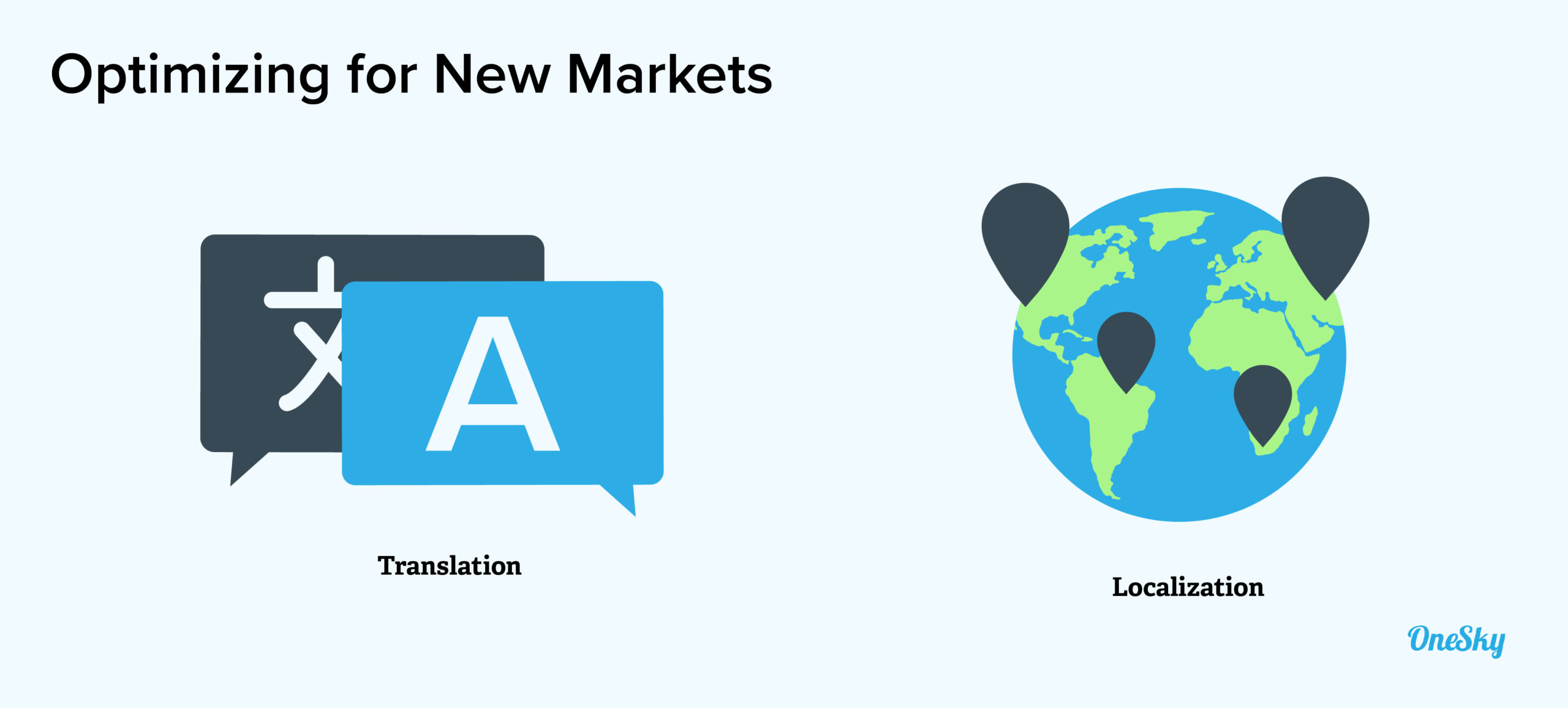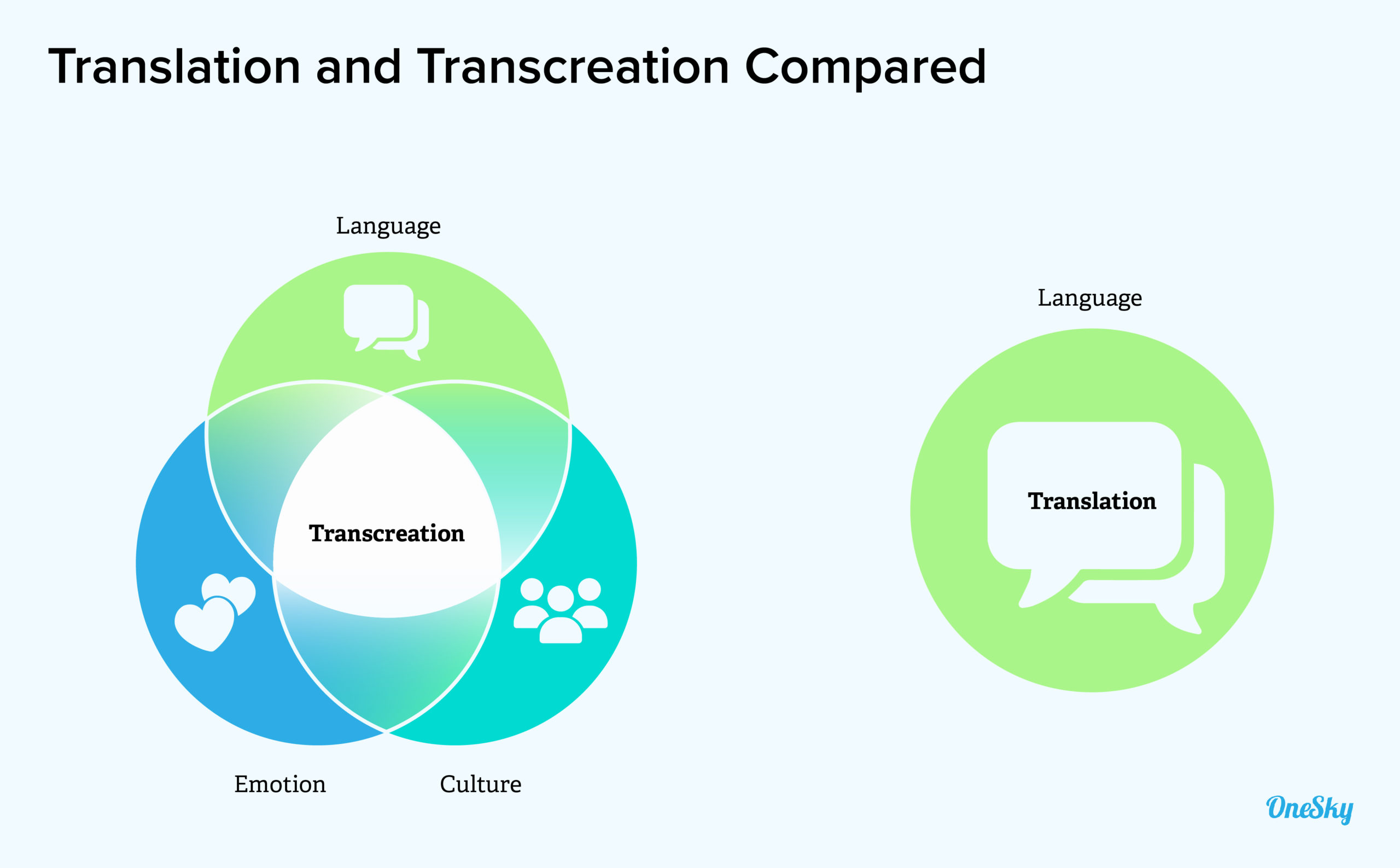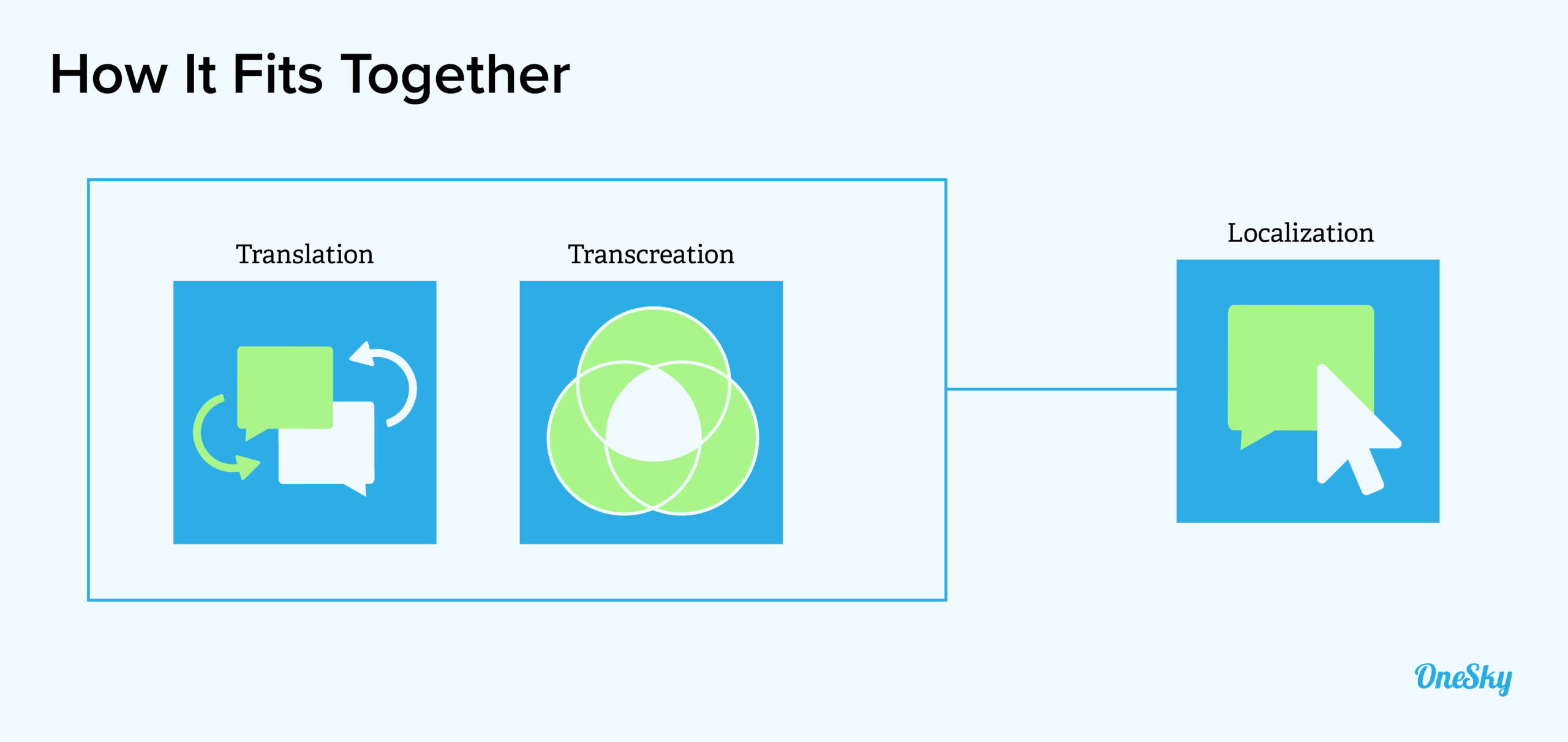Translation, Localization, and Transcreation: The Differences Explained
As with many business projects, there is more than one way to make your website, app, or product accessible to international clients.
In fact, there are many different methods. If you are researching this topic, you may have stumbled across a few of them.
Some of the most commonly used terms are translation, localization, and transcreation. These can all help to optimize your site for a global audience, but each one is a very different process.
To help you understand the differences and figure out which solutions you need, we have created this concise guide.
Translation, Localization, and Transcreation: What Do They Mean?
Every industry has some technical jargon, and ours is no different. Learning what these terms mean might seem like a chore, but it can help you choose the right solutions for your business. Here is a concise explanation of the three terms you need to know.
What Is Translation?
As the name suggests, translation is when you translate content from one language to another. One example would be converting the copy on your website from English to German.
In some cases, translation can include converting content from one locale to another. A locale is a location and language pair, such as Brazilian Portuguese or American English.
Translation is perhaps the simplest and most affordable way to optimize your business for new markets. There are countless solutions for this task, offering both automated and professional services.
Human translation is always more accurate than machine translation, but it’s a little slower and a bit more expensive.
If you plan to add more than one language to your website or app, using a TMS (translation management system) like OneSky is highly recommended. These platforms help you to keep track of translations, and make edits easily.
OneSky also provides an end-to-end workflow for digital localization: text is extracted from the source code of your website or app, translated by professionals, and then integrated automatically.
What Is Localization?
Localization is the entire process of adapting your website or app for a particular locale. This includes translation, but it also covers any changes you make for a different culture.
For example, the interpretation of colors and symbols may change depending on where in the world your users are based.
Certain turns of phrase may need to be adjusted, as well — people take dubious statements with “a pinch of salt” in the UK, while Americans prefer “a grain of salt.” It might be a small difference, but users will notice immediately.
One very important part of localization is integrating translated content, which is a task for technical and design staff.
At times, moving from one language to another will cause problems due to a change in the script or the number of characters. Using a dedicated localization tool can help you bypass some of these pitfalls.
Just as you can hire professional translators, there are many services that provide a complete localization solution. OneSky has around 500 specialists on standby, and you can access their expertise through the TMS.
(Want to learn more about app localization? Download our free ebook guide here.)

What Is Transcreation?
Transcreation is a process whereby content in your native language is used as the inspiration for content in your target language. The new content should be optimized for a specific market, and it could be quite different from the source material.
Although transcreation can be used anywhere, it most often applies to headlines, slogans, taglines, and other small but important pieces of text. In some cases, entire brands are adapted in this way.
As one example — the show named Money Heist in the USA comes from Spain, where the series is known as La Casa de Papel, or “The House of Paper.” This direct translation clearly isn’t quite right for an English-speaking market, so Netflix chose to change the title completely.
In order to make this type of transformation, you might need to work with professional writers and localization experts who are familiar with your target audience.
What Are the Key Differences Between Translation and Transcreation?
If localization is the process of adapting your business for a specific locale, then translation and transcreation are individual steps within that process.
The question is, what really separates them? Here are three key differences:
1) Language vs. Content
If you give a blog post to a translation professional, they will look for the exact translation for every word and consider how to preserve the meaning of every sentence while maintaining good grammar.
In other words, their focus will be on the precise language you use.
In contrast, transcreation looks a lot like the creative process in your native tongue. The only difference is that your chosen professional will try to copy the sentiment of the source material.
Say you write a blog post in American English about tax law in the USA. Translation will give you the exact same post in another language. Transcreation will give you a similar post about the tax laws of your target country, in the local language.
The post will also be written in the style of a native speaker, and perhaps make references to local culture.

2) Converting vs. Creating
The mindset and skills involved with these two processes are very different.
A translator is simply converting your work from one language to another. They work like a bilingual human dictionary, using their own knowledge to interpret your words.
In general, transcreation is completed by a writer, a designer, a video maker, or some other creative professional who is a native speaker of your target language. They will use your existing content as a brief, and then set about creating something that seems natural for people in your target market.
3) Affordable vs. Premium
Professional translation is a very involved process. However, the task is simply about converting existing content.
In transcreation, your chosen professional has to build something new. The extra creativity required makes this a more premium service.
In most cases, human translation is usually much more affordable than transcreation. Machine translation is cheaper still.
For this reason, smaller businesses tend to use transcreation only sparingly, opting for translation wherever possible. Larger businesses can invest in both, although they will still try to reduce their transcreation spend where possible.
Choosing the Right Solution for Your Business
When it comes to adapting your business for a new market, translation, localization, and transcreation can all serve a purpose. The key is identifying which of these processes can benefit your company, and what the ideal mix should be.
Do I Need Translation, Localization, or Transcreation?
As a starting point for answering this question, let’s look at how the three processes fit together.

Ideally, any business that wants to launch internationally should be embracing full localization. Within that process, you have the option to use translation and transcreation for optimizing your content.
But of course, business doesn’t happen in an ideal world. Small companies have limited resources, and larger corporations often have a phenomenal amount of content to localize.
If you are operating with zero budget, translation alone will make your website, app, or product more accessible to people in your target market. As a standalone process, transcreation will make your brand easier for people to connect with.
The downside of this isolated approach is that you won’t be able to deliver the truly native experience that people crave. They might be able to understand your blog posts and product descriptions — but without full localization, they may be forced to make purchases in a foreign currency.
A minor detail? Yes and no. Most consumers and business buyers want to understand their purchases. Confusion degrades confidence.
For this reason, we recommend you create a localization strategy and use dedicated tools. You can then optimize most of your content with translation, and utilize transcreation for marketing, branding, and anywhere else that tone is important.
The Best Localization Solution
There are many great localization tools and services to choose from nowadays. Some offer basic translation, while others provide a wider range of features.
If you are looking for a solution that does it all, OneSky is worth your attention. Our platform offers an end-to-end workflow, with support for 40 different file types and integrations for a range of popular frameworks.
OneSky covers over 50 languages, with machine translation and 1,000 professional translators — including localization specialists. It’s easy to use, and affordable for any business.
Sign up for free to give it a try today.



 Written by -
Written by - 




 Written by
Written by 


